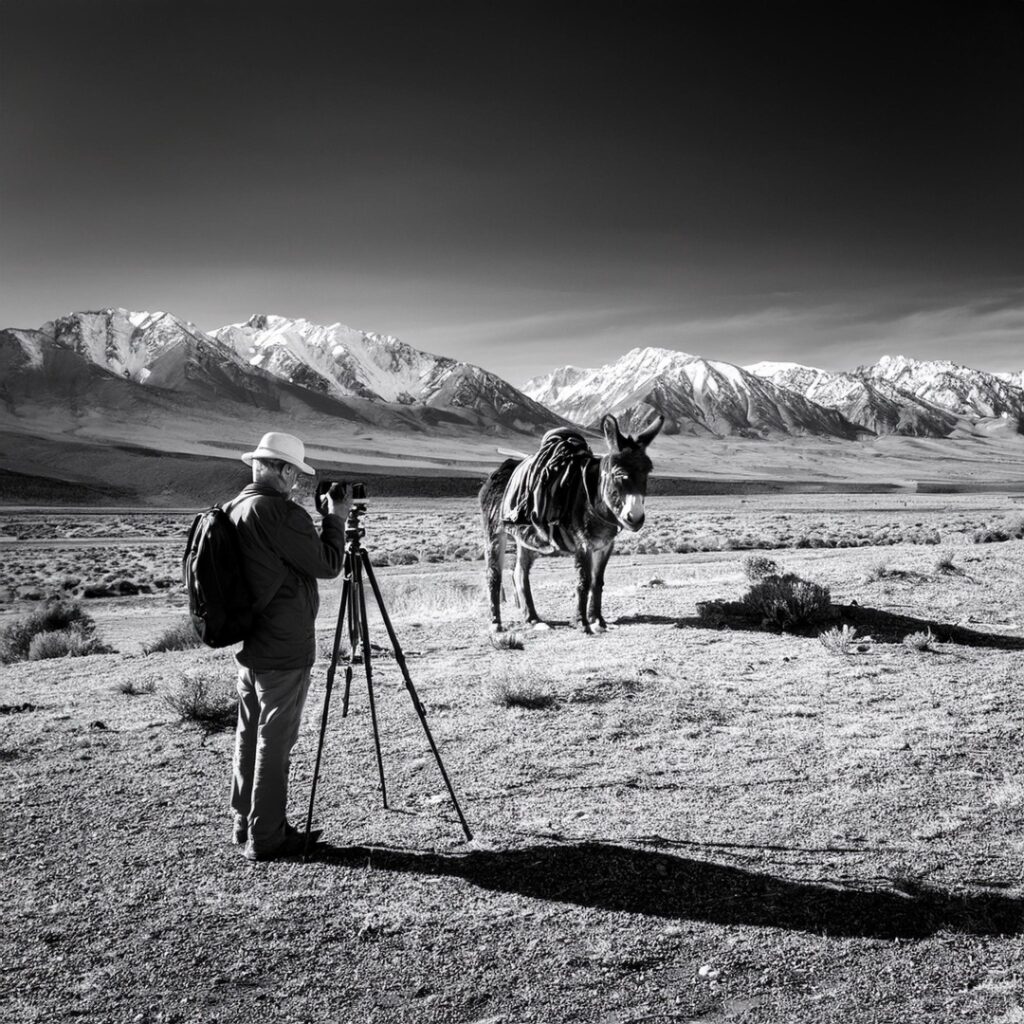Ansel Adams, the master of black-and-white landscapes, was a man who lugged heavy glass plates and a giant view camera up the Sierra Nevada mountains to capture the perfect shot. He wasn’t just an artist, though—he was an explorer of both nature and photography itself. Adams invented the Zone System, a method that gave him precise control over exposure and contrast, allowing him to bring out details in the shadows and highlights with astonishing clarity. In today’s world of generative AI photography, you can’t help but wonder: how would Adams handle a digital camera that fits in your pocket—and more amusingly, how would he react to AI creating those same stunning landscapes in seconds?
Imagine this: instead of packing up a mule with glass plates and hiking up Yosemite, Adams pulls out his phone, feeds an AI a rough sketch, and voilà—a perfectly exposed, high-contrast, black-and-white rendering of Half Dome appears. He’d probably squint at the screen, muttering something about how the Zone System wasn’t meant to be this easy. But then again, Adams was all about pushing boundaries. After all, he didn’t climb mountains just for the view—he did it to capture the world as no one had seen it before.

Adams’ genius wasn’t just in capturing the grandeur of the American wilderness; it was in how he merged art with technology. His creative discoveries, like turning mundane scenes into breathtaking compositions, were matched only by his technical breakthroughs. The Zone System is a great example—a way for him to harness light and shadow in the most exacting manner possible. So, if he were alive today, it’s not a stretch to think he’d be fascinated by generative AI’s ability to simulate those same lighting conditions in seconds.
But here’s the kicker: would Adams, who spent hours in the darkroom perfecting prints, trust an algorithm to do his dirty work? Or would he see generative AI as just another tool in his creative arsenal, akin to his light meter and glass plates—except this time, without the back-breaking hike?
In a world where AI can replicate and even enhance photographic styles, it’s easy to imagine Adams embracing the future, albeit with a raised eyebrow. He’d likely experiment with generative AI, tweaking the outputs until they met his high standards. Perhaps he’d still carry his camera into the wild, snapping shots as he always did, but now he’d also use AI to explore new creative angles—just from the comfort of his log cabin.
Ultimately, whether it’s with a view camera or an AI-powered app, the core of Adams’ work remains the same: capturing beauty, meticulously exploring creative possibilities, and using technology to push the boundaries of what photography can do. After all, if there’s one thing we know about Adams, it’s that he wasn’t afraid of a challenge—and generative AI might be the most fascinating one yet.



